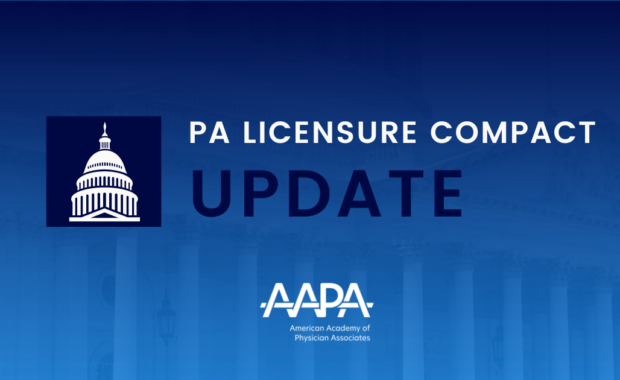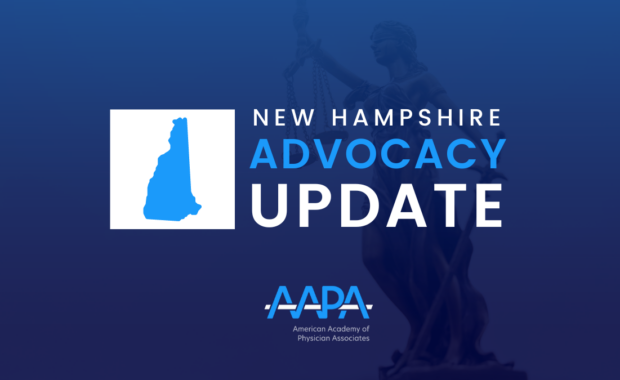Top 10 PA Leadership Insights from 2017 Salary Survey
Key takeaways about PAs in leadership
By AAPA Research Department
1. One in three PAs believes they are in a position of leadership, either formally or informally.
PA leadership takes many forms and may include tasks such as supervising staff, educating/orientating/onboarding others in one’s practice (not precepting), leading quality and performance improvement activities, or managing a budget. Based on 2017 AAPA Salary Survey data, 31% of PAs reported serving in formal or informal leadership roles. Of those respondents, the highest percentage (36%) indicated that their title did not reflect their management responsibilities.
2. PAs in leadership are most commonly employed by hospitals but PAs in hospitals are not more likely to be in leadership.
While one in three (32%) PAs in a leadership position were employed by a hospital, they were no more likely to be in leadership than PAs working in any other clinical settings. When looking at the proportion of hospital-employed PAs in leadership, the overall percent was the same (31%) as PAs working in other clinical settings. PAs were most likely to serve in a leadership capacity when employed by the government (50%) or colleges/universities (59%).
3. PAs in leadership positions report a greater total compensation in 2016.
Among those employed full-time, PAs in leadership reported higher median base salaries ($110,000), bonuses ($7,000), and total compensation ($117,150) compared to PAs who were not serving in a leadership capacity ($99,749, $5,350, and $103,000 respectively).
4. PAs are interested in moving into leadership positions.
Among PAs who were not in a leadership position, 36% were interested in attaining a level of leadership, most commonly chief PA (55%).
5. The new generation of PAs is most likely to be interested in leadership.
PAs with zero to two years’ experience and three to five years’ experience were most likely to be interested in a leadership role (45% and 41% respectively). Those PAs with longer tenures were less likely to be interested in leadership – 25% of PAs with 26 to 30 years’ experience and 17% of those with 31 or more years’ experience.
6. PAs in leadership positions educate others, participate on a committee, or lead improvement activities.
The most frequently reported activities PAs indicated participating in were educating others in their practice (80%), participating on a committee (74%), and leading quality improvement activities (69%).
7. PAs are most interested in becoming chief PAs or managers/supervisors.
The majority of PAs who strove to be in a leadership position hoped to become the chief PA (55%) or a manager/supervisor (41%). Just 12% of PAs hope to become a department chair.
8. Few PAs believe there is upward mobility for PAs within their organization.
Only 20% of PAs felt like there is upward mobility for PAs in their organization. PAs were most likely to see a clear path to leadership when employed by colleges/universities (56%), the government (48%), or hospitals (26%).
9. PAs in leadership positions complete formal leadership training more often.
Only 15.2% of all PAs indicated they completed any formal leadership training since becoming a PA. Of those in leadership positions, however, 32% have completed formal leadership training; only 7% of those not in leadership have completed any formal training. A small number of PA programs offer formal leadership training, but there was no difference in leadership goals among those who went to a program which offered leadership training and those that did not. There was no difference in leadership goals among recent graduates. Among PAs with three to five years’ experience, just 47% of those whose PA programs offered leadership training were interested in a leadership position; this was 42% for those whose program did not include this training.
10. A majority of PAs in leadership serve as preceptors.
Two out of three (67%) PAs who were serving in a formal or informal leadership role precepted students compared to 45% of PAs not in leadership. The greatest proportion of PAs who precept students were chief PAs (75%), followed by those with management responsibility but no title (68%), and those with undetermined title (69%). PAs who precepted students were also slightly more interested in a leadership position (40% who precept were interested in leadership versus 33% of those who do not precept).
PAs interested in leadership can explore the resources provided in Career Central or the Center for Healthcare and Leadership Management (CHLM).
All data within are derived from the 2017 AAPA Salary Survey.
Authors include Noël Smith, MA, AAPA’s senior director of research, and Danielle Melton, MBA, research assistant. Contact them at [email protected].
Thank you for reading AAPA’s News Central
You have 2 articles left this month. Create a free account to read more stories, or become a member for more access to exclusive benefits! Already have an account? Log in.



